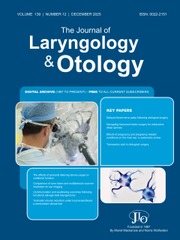No CrossRef data available.
Article contents
Ultra-low dose CT for suspected paediatric foreign body aspiration: comparison with conventional radiograph
Published online by Cambridge University Press: 29 August 2025
Abstract
An aspirated foreign body in a child can represent a potentially life-threatening emergency.
This retrospective study, carried out from 2014 to 2024, compares the estimated effective radiation dose children received during ultra-low dose computed tomography (CT) scans with that received with traditional cumulative radiographic investigations.
Of the 44 patients included in the study, 32 were in the radiograph group and 12 were in the CT group. There was a statistically significant reduction in the length of stay and cost in the CT group when compared with the radiograph group (p < 0.01). There was a statistically significant reduction in the cumulative estimated effective radiation dose in the radiograph compared to the estimated effective dose received in the CT group (p < 0.01). No patients required sedation for CT imaging.
Ultra-low dose CT is a safe, cost-effective first-line investigation in stable patients with suspected foreign body aspiration.
Keywords
Information
- Type
- Main Article
- Information
- Copyright
- © The Author(s), 2025. Published by Cambridge University Press on behalf of J.L.O. (1984) LIMITED.
Footnotes
Holly Jones takes responsibility for the integrity of the content of the paper

